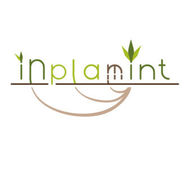52 years of ecological restoration following a major disturbance by opencast lignite mining does not reassemble microbiome structures of the original arable soils (2020.0)
Schmid C., Reichel R., Schröder P., Brüggemann N., Schloter M.
Science of The Total Environment, 745 (), 140955
doi:10.1016/j.scitotenv.2020.140955
Abstract
Opencast mining for lignite continuously creates areas of land that require restoration. Here we applied a chronosequence approach to investigate the development of soil bacterial communities during 52 years as influenced by the restoration process and subsequent changes in soil physico-chemical conditions starting from the initial reclamation of the sites. By comparison with the unaffected soils near the mine, we were able to address the question if soil bacterial communities have reached a steady state within 52 years, which is comparable to the original soil. Our study revealed three distinct phases of the restoration process, each with a specific bacterial community composition. The effect size of these changes was similar to the one observed for seasonal dynamics at our sites. At the beginning of the restoration process Flavobacteriaceae, Cytophagaceae and Sphingobacteriaceae were found as typical members of the bacterial community as well as Rhizobiales as a result of the cultivation of alfalfa on the restored plots. At later stage the families Peptostreptococcaceae, Desulfurellaceae as well as Streptomycetaceae increased in relative abundance and became dominant members of the bacterial community. Even though overall bacterial abundance and richness exhibited values comparable to the original soil already 5 years after the start of the restoration process, main responder analyses reveal differences in the bacterial community structure even 52 years after the start of the restoration process. Mostly Nitrospirae were reduced in abundance in the soils restored for 52 years compared to the original soils. To broaden the significance of our study, we compared our data bioinformatically with published results from other restored areas, which were previously affected by opencast mining. Despite different durations of the different restoration phase, we could observe a large degree of conformity when bacterial patterns of succession were compared indicating common modes of action of ecological restoration tools for bacterial communities.
